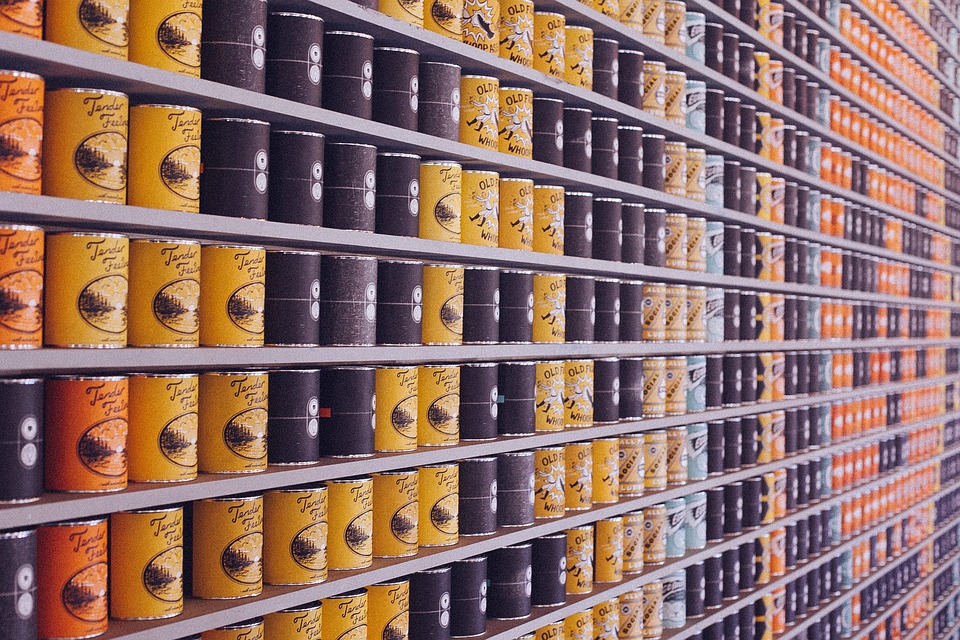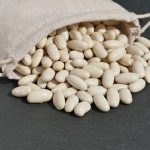For centuries, various foods have made use of ingredients that are beneficial in some way. In the past, salt was utilized to keep meat and fish from spoiling, seasonings were blended in to enhance the taste of food, fruits were maintained with sugar, and cucumbers were pickled in vinegar.
Nowadays, people need and take pleasure in a food supply that is full of flavor, nutritious, secure, easy to use, vibrant, and priced reasonably. Thanks to the advent of food additives and various new technologies, this has become feasible.
There are thousands of ingredients used to make foods. The Food and Drug Administration (FDA) keeps an inventory of more than 3000 elements in the record “Everything Added to Food in the United States”, comprising some which are utilized in the kitchen routinely (like sugar, baking soda, salt, vanilla, yeast, herbs and colourings).
Despite this, some shoppers may worry about additives as the long and unfamiliar names can make them appear to be complex chemical compounds. In point of fact, every single meal we consume – ranging from a freshly-picked strawberry to a freshly-baked cookie – are composed of compounds that decide their taste, hue, consistency, and nutritive value. Government officials and international organizations carefully oversee all food additives to guarantee that they are safe to eat and labeled accurately.
Why Are Food and Color Ingredients Added to Food?
People often overlook the many different advantageous tasks that additives perform in food. We could avoid using certain additives if we opted to cultivate our own food, gather the harvest, grind it, spend a lot of time preparing it, and preserving it, or accept there could be a risk of the food going off more quickly. Essentially, most people nowadays depend on the advantages that are offered by additives such as being higher-tech, attractive, and convenient.
In order to keep food safe and fresh, preservatives can be used to reduce spoilage caused by microbes such as mold, air, bacteria, fungi and yeast. Besides preserving the edibility of the food, they help stop the spread of contaminants that have the potential to result in food poisoning, such as the deadly form of food poisoning known as botulism. Antioxidants are a type of preservative that keeps fats, oils, and foods that contain these substances fresh, preventing them from getting spoiled or having a bad taste. They also keep fruit like apples from discolouring when they are exposed to oxygen.
- To Improve or Maintain Nutritional Value: Vitamins and minerals (and fiber) are added to many foods to make up for those lacking in a person’s diet or lost in processing, or to enhance the nutritional quality of a food. Such fortification and enrichment has helped reduce malnutrition in the U.S. and worldwide. All products containing added nutrients must be appropriately labeled.
- Improve Taste, Texture and Appearance: Spices, natural and artificial flavors, and sweeteners are added to enhance the taste of food. Food colors maintain or improve appearance. Emulsifiers, stabilizers and thickeners give foods the texture and consistency consumers expect. Leavening agents allow baked goods to rise during baking. Some additives help control the acidity and alkalinity of foods, while other ingredients help maintain the taste and appeal of foods with reduced fat content.
What Is a Food Additive?
Any substance added to food is what is meant by a food additive in its widest context. Legally, this type of substance is any that is intended to be incorporated into food or to otherwise alter its characteristics. This includes anything used for production, processing, packaging, shipping, or preserving it. The goal of establishing a legal definition is to mandate a review process before the product is sold. Consequently, this definition disregards elements whose common use is viewed as harmless (where it is not required to have government consent), those substances approved by FDA or the U.S. government. The Department of Agriculture had authority over food additives, colors, and pesticides prior to any legal requirements for premarket approval being in existence.
Food additives that are intentionally included in a food item in order to achieve a particular goal are known as direct food additives. Xanthan gum is added directly to such edibles as salad dressings, chocolate milk, bakery fillings, puddings, heeding the purpose of providing a thicker quality. The majority of the ingredients that have been added to the food will be listed on the product’s label.
Substances that end up in food in small quantities through its packaging, storage, or other processing methods are referred to as indirect food additives. For example, extremely small amounts of materials used to package food may get into the food while it is being kept. Food packaging manufacturers must prove to the U.S. The FDA requires that all substances that come into contact with food are tested and deemed safe before they can be used.
This list details the major categories of additives and what they are generally used for.
- Coloring matters.
- Preservatives. Substances used to prevent spoilage caused by bacteria, fungus and mold, and to improve keeping quality.
- Antioxidants. Substances used to inhibit the oxidation (leading to rancid odors, etc.) of fats during storage.
- Acids and bases. To impart a tartness to food or to make the food acid (for example, to prevent crystallization of jams) or to generate gas for baking or carbonated beverages.
- Flavoring agents and taste enhancers. Aromatic substances used as components of food flavors or as sweeteners.
- Gelling agents, stabilizers and emulsifiers. These are used to produce or to maintain texture.
- Improving agents. This catch-all group includes compounds influencing flavor, consistency, polishing and glazing of confectionery, products, etc.
- 13 identified vitamins and essential minerals.
Bread For Example
It’s widely accepted that bread is created by blending together flour, salt, sugar, eggs, butter or margarine or oil, seasonings, milk, yeast, water and considerable effort. At home, using whole wheat flour can be challenging as it doesn’t mix easily and spoils quickly, forming lumps, mildew, and giving the finished product an unpredictable taste and appearance.
Industry treats its flour with chlorine, chlorine dioxide, nitrosyl chloride, azodicarbamamide, and nitrogen oxides to transform it into a uniform, convenient to mix, longer lasting, pale white powder which is known as white flour.
In whole flour, the process typically removes much of the thiamine, riboflavin, vitamin D, niacin, iron, and calcium. When these nutrients are restored, the resulting flour is known as enriched flour.
The eggs that you purchase for your household are nutritious and help the bread to remain together; however, industries use dried egg solids that have been treated with silicates to make them easier to utilize(unlike fresh eggs which can be disruptive to the equipment).
Additionally, they call upon gums such as carageenan and the mono- and diglycerides to work as emulsifiers. Gluten, which is created by undergoing chemical breaking-down of starch, is an optional ingredient used to help make breads lighter and simpler to handle in the processing facility.
Using vegetable oil or lard is an excellent choice for shortening, but the industry also utilizes lecithin and mono- and diglycerides as they can be more easily blended and won’t go bad as quickly.
Homemade bread gets dry and crumbly when left out; it disintegrates which makes it impossible to put around a hotdog. Industrial bread is ideal for use in wrapping hotdogs since it contains emulsifiers such as polyoxyethylene monostereate which give it a soft texture, antioxidants like BHA and BHT to preserve it, propionate which retards bacterial and fungal growth, and calcium salts to make it resilient and prevent it from crumbling. That’s what additives are for.
Some foods require very minimal additives (e.g. eggs, quality cuts of meat, uncooked vegetables). Some items, such as Space Sticks and the diet breakfast “meal in a glass” offerings, have no additives whatsoever. The future of the food industry lies with artificial food, rather than with expensive and bulky natural items.
Are Food Additives A Health Risk?
Doesn’t anyone get hurt; aren’t some additives poisons? The use of Agene (nitrogen trichloride), which was the initial flour maturation agent, was stopped after it was observed to cause convulsions in canines.
Organic peroxides have the potential to cause mutations, which are changes to the genetic material of the cells. Phenetyl alcohol can have an effect on the process of DNA creation.
On occasion, a mistake can occur. In 1960, approximately 60,000 individuals in the Netherlands developed skin conditions due to the new artificial emulsifier called ME – 18 which had been incorporated into margarine.
Though there are very few fatalities or instances of anomalous embryos or strong allergic responses considering the amount of new food items appearing in supermarkets every year, estimated to be around 10,000.
The fundamental concept of the food industry can be expressed in the saying “there is no such thing as an absolutely safe substance; only safe methods of handling them.” The true source of alarm is based on the potential consequences of long terms use or slight changes in health. Examples of recent matters of public interest comprise of the cyclamates and monosodium glutamate.
Some Examples of Why the Industry Uses Additives
The Cyclamates. M. Swedish scientist Sveda uncovered in 1937 that sodium cyclohexane sulfamate (or what was later to be called sucaryl sodium) tasted sweet. Dupont obtained a patent for its manufacture in 1942. Both sodium and calcium cyclamates possess a sweet taste and are around forty times greater in intensity than the same amount of sucrose. It was thought that in the 1960’s, around three fourths of Americans had a preference for diet and take-out foods, as well as sweet treats, and therefore consuming cyclamates as a sweetener was popular.
Cyclamates are not caloric at all, and have no bitter taste when consumed in regular amounts for sweetening, unlike saccharine. The FDA first declared cyclamates to be ‘Generally Realized as Safe’ (GRAS) in their list of 183 compounds in 1919. A survey sent by the FDA to 900 researchers resulted in 355 responses. However, the Nader group have cast doubt upon the accuracy of the GRAS list due to only 194 of the respondents giving their approval that the compounds are GRAS. A GRAS substance can be employed for any food which does not have a determined identity, with some limitations for certain chemicals. The basic principle of the FDA’s actions is similar to the system of justice that has been effective for humans, in which a chemical substance is assumed to be innocent until proven to be guilty. In many situations, cyclamates had become a defining feature of jars of jelly or jam, preventing the average consumer from knowing if they were consuming any kind of sweeteners at all, unless they had every single volume of CFR Title 21 in their home.
The data gathered suggested that cyclamates were not “generally recognized as safe,” however, the Food and Drug Administration did not do anything in response. In 1950, Abbott’s drug application for Sucaryl Sodium was assessed. The FDA permitted the application in spite of being aware that the information provided was insufficient, having done their own assessments. It was observed afterwards that the FDA’s experiments indicated a significant rate of lung tumors and other rare fatal tumors in trial animals.
In 1966, two Japanese scientists discovered that when cyclamates entered the body, they were changed into cyclohexylamine (CHA). CHAM, which can cause pregnancy complications, can create malformations in unborn babies that are comparable to those caused by thalidomide. In 1969, Verrett and Legator, who both worked for the FDA, announced the same conclusions and added that CHA had an effect on chromosomal splitting. It is thought to be more of a risk than something teratogenic because a teratogen can alter the body of a newborn child, but not the genetic makeup. The Federal Drug Administration did not respond to this information when it was made available to the public in various forms, including in the written media.
On October 19, 1969, Robert Finch, the Secretary of Health, Education and Welfare, declared that cyclamates were no longer regarded as safe or generally recognized as safe. By choosing Fall 1970 to be the official cancellation date, he brought about the destruction of goods that were worth over one billion dollars. If action had been taken earlier, it could have prevented the production from beginning.
The Bottom Line
Recipes have been relying on food ingredients for a long time to safeguard, enhance the taste, combine, thicken, and give dishes their vibrant colors. This use of food components has been fundamental in diminishing serious nutritional deficiencies in the population. These components likewise guarantee that we can access tasty, beneficial, secure, practical, vivid and economical nourishments that satisfy customers’ desires all year round.
Strict examination, control, and observation of food and color additives is carried out. The Federal government requires corroboration that each element is non-hazardous when employed in the expected amounts before being placed in food items. In addition, all additives are continually assessed for safety as scientific knowledge and testing techniques progress. Consumers should feel safe about the foods they eat.









